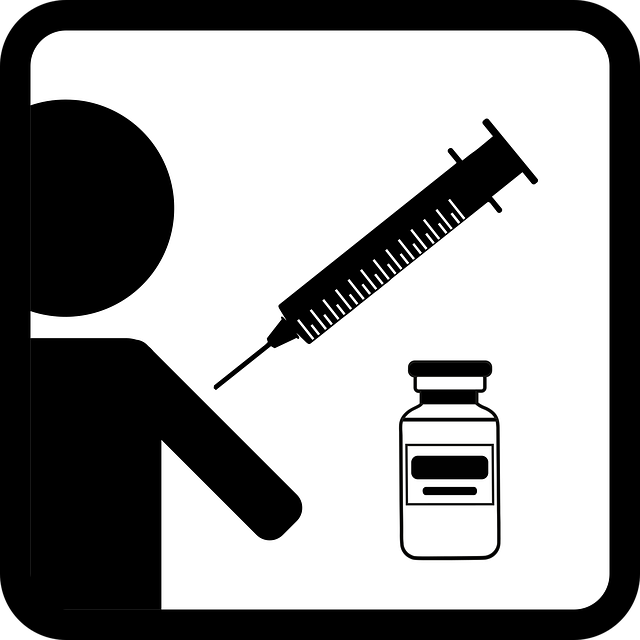Semaglutide, a synthetic GLP-1 receptor agonist, offers a revolutionary semaglutide injectable form for managing type 2 diabetes. This medication signals the pancreas to release insulin and suppress glucagon, effectively lowering blood sugar levels while promoting weight loss. Administered via subcutaneous injection once weekly, it provides superior glycemic control compared to oral drugs, with convenient dosing and minimal side effects. Ideal candidates include those who've tried other medications without success, or have comorbidities like obesity, hypertension, or high cholesterol. Close monitoring is crucial for optimal results, managing potential adverse reactions like nausea, vomiting, and hypoglycemia.
“Discover the transformative power of Semaglutide injection as a leading-edge approach to glycemic control. This comprehensive guide delves into the mechanisms of this innovative therapy, exploring its unique semaglutide injectable form, administration, and dosage intricacies. Uncover the myriad benefits it offers diabetes management, while also dissecting potential side effects and precautions. Learn who is ideal for this treatment, compare it to other options, and understand the monitoring strategies during and post-therapy. Optimize your glycemic control journey with Semaglutide’s precision.”
What is Semaglutide and How Does it Work?

Semaglutide is a medication that has gained significant attention in diabetes management due to its unique mechanism of action. It is a synthetic version of a natural hormone, GLP-1 (glucagon-like peptide-1), which plays a crucial role in regulating blood sugar levels. The semaglutide injectable form offers a novel approach to glycemic control, particularly for individuals with type 2 diabetes.
This medication works by mimicking the effects of GLP-1, signaling the pancreas to release insulin and suppressing the release of glucagon, thus helping to lower blood sugar. It also promotes feelings of fullness, which can aid in weight management—a beneficial side effect for many patients with diabetes who are often overweight or obese. The injectable form provides a convenient and effective way to manage this chronic condition, offering improved glycemic control and potentially reducing the risk of long-term diabetic complications.
The Semaglutide Injectable Form: Administration and Dosage

The Semaglutide Injectable Form is a convenient and effective way to manage glycemic control in individuals with type 2 diabetes. This medication is administered via subcutaneous injection, allowing for steady absorption into the bloodstream. The dosage of semaglutide is tailored to each patient’s needs, typically starting at a lower dose and gradually increasing as tolerated. Healthcare providers will monitor patients’ blood sugar levels regularly to ensure optimal results and adjust the dosage accordingly.
The injection is usually administered once weekly, with the same site used each time to minimize discomfort. Patients are instructed on proper injection technique to ensure safety and ease during self-administration. It’s crucial to follow the prescribed schedule and not miss doses, as this can impact glycemic control. Additionally, patients should be aware of potential side effects associated with semaglutide injections, such as nausea or stomach pain, and report any concerning symptoms to their healthcare team.
Benefits of Semaglutide for Glycemic Control

Semaglutide, in its injectable form, offers a significant advantage in glycemic control for individuals with type 2 diabetes. This innovative therapy has shown remarkable effectiveness in lowering blood sugar levels, providing a much-needed alternative to traditional oral medications. The semaglutide injectable form acts as a glucagon-like peptide-1 (GLP-1) receptor agonist, mimicking the body’s natural hormones to stimulate insulin secretion and inhibit glucagon release.
This dual action results in improved insulin sensitivity and reduced glucose production, leading to better blood sugar regulation. The benefits extend beyond glycemic control; semaglutide is also associated with weight loss, which can further enhance overall metabolic health. Its once-weekly administration makes it a convenient option for patients, potentially improving adherence to treatment compared to more frequent injections or oral medications.
Potential Side Effects and Precautions

The semaglutide injectable form, like any medication, comes with a range of potential side effects that patients should be aware of. Common reactions include nausea, vomiting, and diarrhea, which are usually mild and temporary. These gastrointestinal symptoms often subside as your body adjusts to the treatment. In rare cases, severe allergic reactions or hypoglycemia (low blood sugar) may occur, requiring immediate medical attention. It’s crucial for individuals receiving semaglutide injections to monitor their blood sugar levels regularly, as this medication can affect glycemic control.
Precautions should be taken when using semaglutide to ensure the safest and most effective treatment. Patients with a history of severe allergies or endocrine disorders should consult their healthcare provider before starting this therapy. Additionally, those with kidney or liver disease may need dosages adjusted, as these conditions can impact how the body processes the injectable form of semaglutide. Regular check-ups are recommended to monitor for any adverse effects and to ensure optimal glycemic management.
Who is a Candidate for Semaglutide Injection?

The semaglutide injectable form is a treatment option for individuals with type 2 diabetes who require improved glycemic control. Candidates for this injection typically have tried other medications but experienced suboptimal results in managing their blood sugar levels. It is suitable for those who want to reduce their dependence on insulin or oral drugs while achieving better metabolic stability.
Ideal candidates often present with elevated HbA1c levels, indicating persistent high blood glucose over time. Additionally, they may have comorbidities like obesity, high blood pressure, or high cholesterol levels, making it crucial for them to explore alternative treatments. Age and overall health status are also considered; however, semaglutide has shown effectiveness across various age groups, offering a promising solution for many people with diabetes.
Comparison with Other Diabetes Treatments

Semaglutide, in its injectable form, offers a unique approach to glycemic control compared to traditional diabetes treatments. Unlike insulin, which is often delivered via injections or insulin pumps and requires careful monitoring of blood sugar levels, semaglutide provides a once-weekly injection that mimics the action of a natural hormone called GLP-1. This reduces the burden on patients by simplifying their treatment routine.
Compared to other oral diabetes medications, semaglutide demonstrates superior efficacy in lowering HbA1c levels, often achieving target ranges more effectively and with fewer side effects. Its long-acting nature allows for better blood sugar control throughout the day, making it a compelling option for individuals seeking improved glycemic management.
Management and Monitoring During and After Treatment

During treatment with semaglutide injection, regular monitoring is crucial to assess glycemic control and manage potential side effects. This includes frequent blood glucose testing to ensure levels remain within the desired range. Healthcare providers should also monitor for adverse reactions, such as nausea, vomiting, or changes in appetite, which are common with semaglutide therapy. Early intervention can help manage these side effects effectively.
After initiating semaglutide injections, close monitoring continues for several weeks to months. This period is essential to fine-tune the dosage and optimize glycemic control. Regular follow-ups allow healthcare professionals to adjust the treatment plan as needed, ensuring the best possible outcomes for patients with type 2 diabetes. The semaglutide injectable form requires careful management, but its benefits in glycemic control make it a valuable tool in comprehensive diabetes care.
